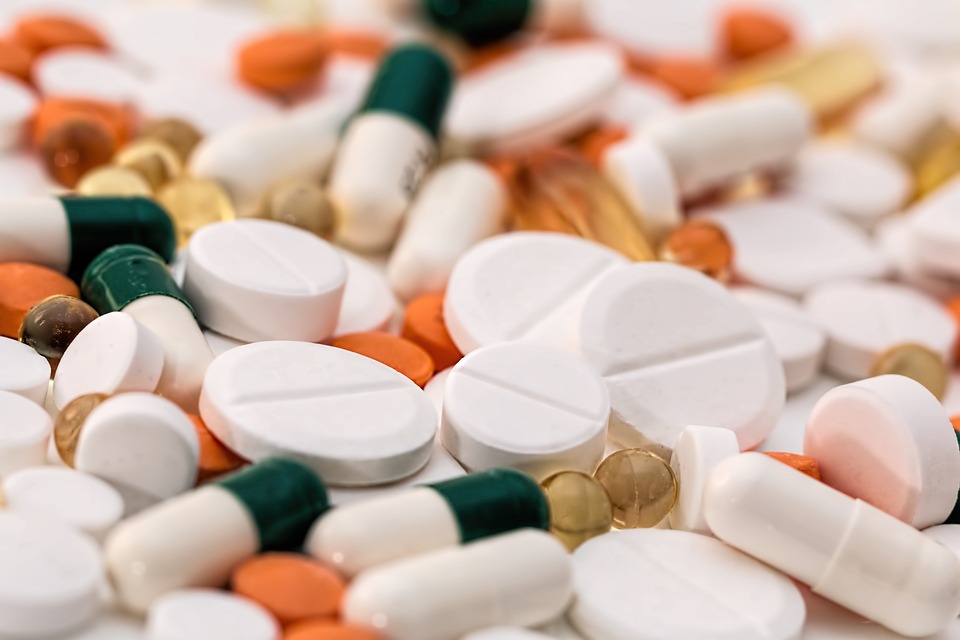A massive opioid epidemic is currently sweeping the United States, creating a shocking increase in overdoses and deaths. Although some people are prescribed painkillers (like oxycodone, hydrocodone, and fentanyl) for chronic pain issues, there are also many who use opioids as recreational drugs. For those who are using opioids as prescribed, it’s possible that an increase in the usage of medical marijuana products could actually encourage people to switch from opioids to MMJ. Because medical cannabis can help treat a number of physical symptoms, researchers are trying to determine if MMJ products could create a significant decrease in opioid usage – resulting in slowing down the opioid epidemic, or even stopping it in its tracks.
The current crisis of opioid abuse began in the late 1990s, when there were around 4,000 overdose deaths taking place every year. In the last two decades, the numbers have skyrocketed – more than 64,000 Americans died in 2016 from overdoses (compared to the more than 52,000 that died in 2015). That figure means that nearly 180 people die from opioid-related overdoses every single day in the U.S., making it the leading cause of death for people under the age of 50. Over two million Americans are considered to be dependent on opioids, while at least 95 million individuals used prescription painkillers during 2017.
If steps aren’t taken to hit back against the epidemic soon, public health experts estimate that over 500,000 individuals could die from opioid overdoses in the next 10 years. The federal government has tried to boost some drug enforcement measures and is pushing regulations to get doctors to write fewer prescriptions for opioid painkillers. However, it will take at least until 2020 for any of the effects of these measures to be noticed, which means that the only hope the country has is to think outside the box to limit the growing number of people using and abusing opioids.

The overuse and abuse of prescription painkillers has become a real problem in the U.S. in recent years.
One possibility for curbing the epidemic is to use medical marijuana products to treat chronic pain instead of prescription painkillers. Several studies have shown that medical cannabis can be used to effectively treat pain symptoms. In a recent study, elderly patients who started using MMJ products were able to lower their pain levels (and experience an improved quality of life). More than 70 percent were able to see a moderate to significant improvement. Overall, 93 percent of the elderly reported improvements in their overall health. After six months, more than 18 percent of the medical marijuana users had reduced or completely stopped using opioids to treat their pain symptoms.
Switching from opioids to medical marijuana has tons of benefits. MMJ products are much safer since they don’t have the potency of opioids (which result in dangerous and often lethal overdoses). Most opioids also work so that individuals end up needing more and more of the drug to feel its effects – something that doesn’t apply to medical cannabis. There are also way less side effects from using MMJ products (usually mild symptoms like dizziness, fatigue, dry mouth, or mental clouding) than from using opioids.
Another recent study conducted in Minnesota (published by the Minnesota Department of Health’s Office of Medical Cannabis) also demonstrates how an increase in MMJ usage could lead to a decrease in opioid dependence. The first-of-its-kind study included 2,245 people who enrolled in a medical marijuana program during the last few months of 2016. The results showed that 38 percent of patients were able to reduce their opioid usage, and 42 percent reported a pain reduction of 30 percent or more. Of the 353 patients who self-reported taking opioid medications during the time they used the MMJ, 63 percent reduced or eliminated their opioid use after six months. The research manager for the office of medical cannabis, Dr. Tom Arneson, said, “These survey results are a good starting point. We need more research into the potential value of medical cannabis in pain management, especially as our communities grapple with the harmful impacts of opioids and other medications now in use for that purpose. We encourage health care providers to read the full report as they consider whether medical cannabis should be part of their strategies for treating patients’ intractable pain.”

Could MMJ products be a key factor in overcoming the U.S.’s opioid epidemic?
If more research is conducted, even more credence would be lent to the concept that MMJ products can safely and effectively treat pain symptoms. Reducing the number of people being prescribed painkillers could greatly impact the rising trend of overdoses in the U.S. from these medications – this factor might even prevent some individuals from being prescribed opioids in the first place.
The opioid epidemic is also creating a very large impact on the U.S. economy – a recent study from 2016 stated that opioid overdoses, abuse, and dependence have cost the economy around $78.5 billion. However, the White House stated in late 2017 that the opioid epidemic has cost the U.S. closer to an estimated $504 billion. Either way, using more MMJ products instead of prescribing painkillers could actually help boost the economy.
There are many benefits to using MMJ products for people experiencing symptoms of chronic pain, including a lower likelihood of dependence and side effects. If the U.S. wants to truly make a dent in the opioid epidemic, the health care field should consider including medical marijuana products as much as possible in their treatment plans. Their patients could benefit from the usage of medical cannabis, while also helping the country to cut down on individuals addicted to painkillers. Using MMJ products could also lower the costs the economy is incurring from the overuse of opioids. It definitely seems worth it for health care professionals and patients alike to consider using MMJ products to help cut down the use of opioids.
